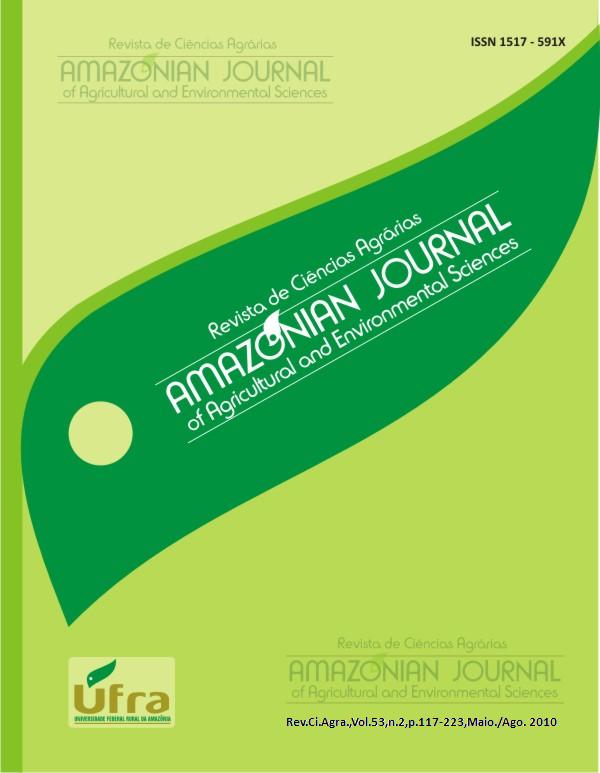Physiological and metabolic responses of grasses to flooding
Abstract
Several studies have shown that the flooding is capable of interfering with the photosynthetic capacity and, consequently, the development of grasses. Seeking more information on the tolerance of plants to flooding, we studied the morphological and metabolic responses in Brachiaria and Paspalum fasciculatum Brizantha, subjected to 21 days of flooding. In Brachiaria, flooding significantly reduced the photosynthetic rate and altered the pattern of allocation and translocation of biochemical components, with a significant increase in total soluble sugars in the leaves and roots, reducing sugars and starch in leaves, roots and amino acids. In flooded plants of P. fasciculatum was no significant difference in photosynthetic rate, starch and amino acids, with accumulation of total soluble sugars in the roots only. The replies given by Brachiaria plants allow us to affirm that this species is more sensitive to flooding, while P. fasciculatum species is more tolerant.
To obtain information about the tolerance of plants to flooding, we studied the morphological and metabolic responses in Brachiaria and Paspalum fasciculatum Brizantha, subjected to 21 days of flooding. In Brachiaria, flooding significantly reduced the photosynthetic rate and altered the pattern of allocation and translocation of biochemical components, with a significant increase in total soluble sugars in the leaves and roots, reducing sugars and starch in leaves and amino acids in the roots. In flooded plants of P. fasciculatum was no significant difference in photosynthetic rate, starch and amino acids, with accumulation of total soluble sugars in the roots only. The set of changes presented by plants Brachiaria to suggest that this species is more sensitive to waterlogging while P. fasciculatum species is more tolerant.
Downloads
Authors retain copyright and grant the Journal the right to the first publication. Authors are encouraged to and may self-archive a created version of their article in their institutional repository, or as a book chapter, as long as acknowledgement is given to the original source of publication. As the Journal provides open access to its publications, articles may not be used for commercial purposes. The contents published are the sole and exclusive responsibility of their authors; however, the publishers can make textual adjustments, adaptation to publishing standards and adjustments of spelling and grammar, to maintain the standard patterns of the language and the journal. Failure to comply with this commitment will submit the offenders to sanctions and penalties under the Brazilian legislation (Law of Copyright Protection; nº 9,610; 19 February 1998).


.jpg)









